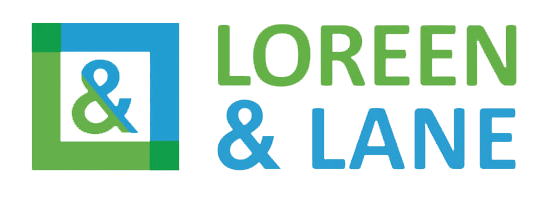Navigating the complexities of Medicare can feel like trying to solve a puzzle without the picture on the box. But don’t worry! We’re here to break down everything you need to know about Medicare Part D in a way that’s easy to understand. Whether you’re new to Medicare or just looking to refresh your knowledge, this guide will cover all the bases. So, grab a cup of coffee, and let’s dive into the world of Part D!
What is Medicare Part D?
Medicare Part D is a component of Medicare that provides coverage for prescription drugs. Unlike Original Medicare, which includes Part A (hospital insurance) and Part B (medical insurance), Part D is specifically designed to help cover the cost of medications. It’s a voluntary program, but enrolling can save you a significant amount of money on prescription drugs.
Why You Might Need Medicare
Rising Prescription Costs
With the cost of prescription drugs continuing to rise, having Medicare Part D can be a financial lifesaver. Without this coverage, you could end up paying full price for your medications, which can add up quickly.
Health Management
If you have chronic conditions that require regular medication, Part D helps ensure you can afford your prescriptions. This coverage can improve your overall health management by making your medications more accessible.
Is Medicare Part D Coverage Required?
Optional, But Beneficial
Medicare Part D is not mandatory, but it is highly recommended. If you choose not to enroll when you’re first eligible, you may face a late enrollment penalty if you decide to get it later. This penalty can increase your premium cost for as long as you have Part D.
Avoiding Penalties
To avoid the Part D late enrollment penalty, you must have creditable prescription drug coverage. This means your current coverage must be at least as good as Medicare’s standard prescription drug coverage. Creditable coverage could be through another Medicare plan or as part of an employer group plan.
Options for Medicare Prescription Drug Coverage
Standalone Medicare Prescription Drug Plans
If you have Original Medicare or a Medicare Supplement plan, you can purchase a standalone Medicare prescription drug plan. These plans work alongside your existing Medicare coverage to help pay for your medications.
Medicare Advantage Prescription Drug (MAPD) Plans
Many Medicare Advantage Plans include Part D coverage. These are called Medicare Advantage Prescription Drug (MAPD) Plans. One of the biggest advantages of MAPD plans is that they often come with $0 premiums, making them an affordable option for comprehensive coverage.
2024 Medicare Part D Premiums
Projected Average Premium
The Centers for Medicare and Medicaid Services (CMS) recently announced that the 2024 average total monthly Part D premium is projected to be approximately $55.50. This is a slight decrease from $56.49 in 2023.
Lower Premiums with Retirement Answer Team
Despite these projections, many of the Part D premiums for coverage offered by Retirement Answer Team are much lower and often even $0. This can be a significant saving for those on a tight budget.
Annual Drug Plan Premiums
Each year on October 1st, the new annual drug plan premiums are released. This is an important date to mark on your calendar, as it can affect your healthcare budgeting for the upcoming year.
How to Enroll in Medicare Part D
Initial Enrollment Period
Your initial enrollment period for Part D is seven months long. It starts three months before the month you turn 65, includes your birthday month, and ends three months after your birthday month.
Open Enrollment Period
If you miss your initial enrollment period, you can still enroll during the Medicare Open Enrollment Period, which runs from October 15 to December 7 each year.
Getting Help with Medicare Enrollment
Navigating Medicare can be challenging, but you don’t have to do it alone. Our local team of advisors is here to help you every step of the way.
Personalized Assistance
Our experts can provide personalized assistance, helping you understand your options and choose the best plan for your needs.
Understanding Your Needs
We take the time to understand your unique healthcare needs and budget to recommend the best plan for you.
Simplifying the Process
We simplify the enrollment process, making it easy and stress-free for you to get the coverage you need.
Local Support
Having local support can make a big difference. Our advisors are familiar with the plans available in your area and can provide you with the most relevant information.
FAQs About Part D
How much does Medicare Part D cost?
The cost of Part D varies depending on the plan you choose and the medications you need. The average premium for 2024 is projected to be $55.50, but many plans offered by Retirement Answer Team have much lower premiums, sometimes even $0.
What happens if I don’t enroll in Medicare Part D when I’m first eligible?
If you don’t enroll in Part D when you’re first eligible and you don’t have creditable prescription drug coverage, you may have to pay a late enrollment penalty if you decide to get coverage later. This penalty can increase your premium cost for as long as you have Medicare Part D.
Can I change my Medicare Part D plan if my needs change?
Yes, you can change your Part D plan during the Medicare Open Enrollment Period, which runs from October 15 to December 7 each year. This allows you to adjust your coverage based on your current healthcare needs.
Do I need Medicare Part D if I have a Medicare Advantage Plan?
If you have a Medicare Advantage Plan that includes prescription drug coverage (MAPD), you typically don’t need to enroll in a separate Part D plan. However, if your Medicare Advantage Plan does not include prescription drug coverage, you will need to enroll in a standalone Part D plan.
How can I find out if my medications are covered under a Medicare Part D plan?
Each Medicare Part D plan has a formulary, which is a list of covered medications. You can check the formulary of any plan you’re considering to see if your medications are covered. Our local advisors can also help you with this process.

Conclusion
Medicare Part D is an essential component of your healthcare coverage, especially if you require prescription medications. Understanding your options and enrolling in the right plan can save you money and ensure you have access to the medications you need. With the 2024 average total monthly premium projected to be around $55.50, and even lower premiums available through providers like Retirement Answer Team, there’s a plan out there to fit your budget and healthcare needs. If you have any questions or need assistance with your Medicare coverage, our local team of experts is here to help you every step of the way.
FAQs
Q1: What is the difference between Medicare Part D and Medicare Advantage?
Part D provides prescription drug coverage, while Medicare Advantage (Part C) offers an alternative way to receive your Medicare benefits. Many Medicare Advantage plans include Part D coverage, but not all of them do.
Q2: Can I get Medicare Part D if I’m still working and have employer coverage?
Yes, you can enroll in Medicare Part D even if you have employer coverage. However, you should ensure that your employer’s coverage is considered creditable to avoid any late enrollment penalties.
Q3: Are all prescription drugs covered under Medicare Part D?
Not all prescription drugs are covered under Part D. Each plan has its own formulary, which is a list of covered medications. It’s important to check the formulary of any plan you’re considering to make sure your medications are covered.
Q4: How can I avoid the Part D late enrollment penalty?
You can avoid the late enrollment penalty by enrolling in Part D when you’re first eligible or by maintaining creditable prescription drug coverage through another source, such as an employer plan.
Q5: What should I do if I can’t afford my Medicare Part D premiums?
If you have difficulty affording your Part D premiums, you may qualify for Extra Help, a program that assists with prescription drug costs. You can apply for Extra Help through the Social Security Administration.

